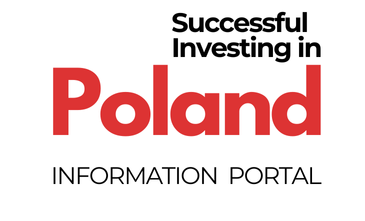In September 2025, the Polish Chamber of Commerce (KIG) published its Monthly Review of the Economic Situation in the Provinces, analysing data from the Central Statistical Office for the period January–August 2025. The report shows how diverse Polish regions are and where the greatest potential for investors lies. The report is a compendium of knowledge for foreign entrepreneurs interested in investing in Poland and analysing trends in local labour markets, industry and construction.
Labour market – low unemployment and HR challenges
According to the report, the number of registered unemployed in August was 856,300, an increase of 84,000 compared to last year. Although the average unemployment rate for the whole country was 5.5%, there are clear differences between regions:
- Wielkopolska: the lowest unemployment rate in Poland – only 3.4%. This region is particularly attractive to investors who value a stable labour market.
- Podkarpacie: the highest unemployment rate – 8.9%. However, this may mean easier access to employees for new investment projects.
At the same time, the KIG report points to a decline in the number of job offers – in August, 39,300 were reported, almost half as many as a year earlier. This is a sign that the labour market in Poland is beginning to cool down, which may affect the availability of staff for new investments.
Salaries – Mazovia leads the way in wages
The average salary in Poland in the period January–August 2025 was:
- Industry: PLN 8,720 (+8.2% y/y)
- Construction: PLN 8,427 (+7.2% y/y)
The highest wages were received by employees in the Mazovia Province, which includes Warsaw:
- industry – PLN 9,828,
- construction – PLN 10,208.
This confirms that the Warsaw region remains the centre of business and finance. On the other hand, the lowest labour costs were recorded in Warmian-Masurian (PLN 7,498 in industry) and Lublin (PLN 6,858 in construction), which may be a competitive advantage for investors looking for locations with cheaper labour.
Industry – West Pomerania and Silesia at opposite ends of the spectrum
Industrial output in Poland increased by 2.0% y/y during this period. However, regional data varies significantly:
- West Pomerania: leader in production growth (+12.3%) and productivity (+12.9%). This is a region with great industrial potential, benefiting from its proximity to seaports and the German border.
- Lower Silesia: a decline in production of 4.3% and productivity of 2.7%. This is a surprising signal, given the region’s previous dynamics.
Construction and housing market – Świętokrzyskie and Lubuskie provinces on the rise
Construction output in Poland increased by 2.6% y/y, with the best results recorded in:
- Świętokrzyskie: an increase of 22.2%,
- Lubuskie: an increase in construction productivity of as much as 17.5% and, at the same time, the largest increase in the number of completed flats (+13%).
At the same time, the national number of dwellings completed fell by 3.1% y/y, with the largest decline recorded in Lubelskie (-34.7%). For property developers, this means that some regions still have significant unmet housing needs.
Investing in Poland – which region to choose?
The KIG report from September 2025 clearly indicates that investing in Poland requires looking at individual regions and their specific characteristics:
- Wielkopolska – a stable labour market with the lowest unemployment rate in the country (3.4%), ideal for investors looking for predictable employment conditions.
- Mazovia – the highest salaries (over PLN 9,800 in industry), which means access to highly qualified staff, but also higher operating costs.
- Zachodniopomorskie – the fastest growth in industrial production (+12.3% y/y), making this region one of the most promising for industry and logistics.
- Świętokrzyskie and Lubuskie – leaders in construction; the former thanks to record production growth (+22.2%), the latter thanks to rapid growth in housing and high productivity in the sector.
- Lubelskie and Warmia-Masuria – regions with lower wages, which offer investors a cost advantage and at the same time have the potential for further growth.
The report clearly shows that Poland is a diverse market where investment advantages depend on the choice of region. Stability, growing productivity and still competitive labour costs make it an attractive place to invest capital, regardless of the industry.





